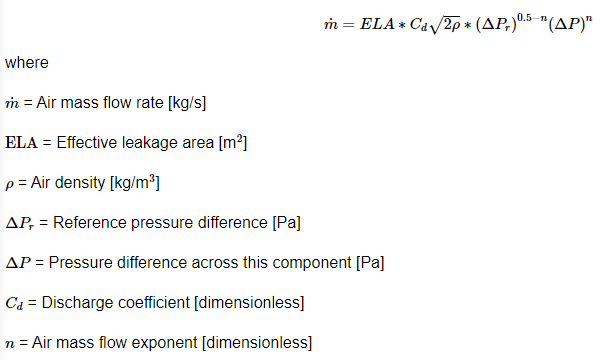What is the best way to model interzone airflow through zone Air Walls, with the EnergyPlus AirflowNetwork?
The EnergyPlus 'Tips and Tricks' section on Air wall, Open air connection suggests using a large vertical opening between zones with the AFN, which seems to realistically capture both the volume and two-way flow of air between two zones open to each other. However I have since learned that EnergyPlus does not support using the SimpleOpening with BuildingSurfaces (only with FenestrationSurfaces). Our team would like to use the Air Wall, rather then a FenestrationSurface, to capture radiant exchange between zones.
The next best strategy seems to be to model the airflow using an extremely leaky crack. There seems to be some precedent for this, referenced in the DetailedOpening Input/Output documentation, which suggests using an AFN Crack with a "large air mass flow coefficient" for large horizontal openings, since regular horizontal openings won't model two-way flow in exterior surfaces. While this method won't capture the two-way flow that occurs in the AFN SimpleOpening, its seems like I should be able to reproduce the volume (with a correctly chosen flow coefficient), while maintaining the radiant exchange properties of the Air Wall.
If this is a good strategy, a second question I have is, is it valid to approximate the mass flow coefficient from the formula used for surface EffectiveLeakageArea?
The derivation I have in mind is as follows:
The crack formula is: m = Cq * dP^n where: m_crack = mass flow rate kg/s Cq = mass flow coefficient dP = pressure difference across crack n = mass flow exponent
The ELA formula is:

So to derive the Cq from the ELA formula:
m_crack = m_ela Cq * dP^n = ELA * Cd * sqrt(2 * density) * dP_r^(0.5 - n) * dP^n
The dP^n cancels out, I assume n = 0.5 (for turbulent flow) which makes dP_r(0.5-n) = 1, and rearrange to get:
Cq = ELA * Cd * sqrt(2 * density)
I realize I can use the Surface:ELA object to achieve the same result, but we've already programmed infiltration into our software using the AFN Crack method, so would like to avoid introducing a new EP object, if possible.
Please let me know if this seems reasonable, of if there's a better way of modeling interzone air mixing with an Air Wall. Thanks in advance.




